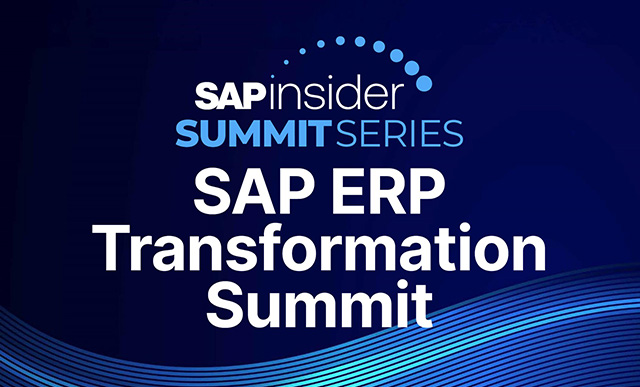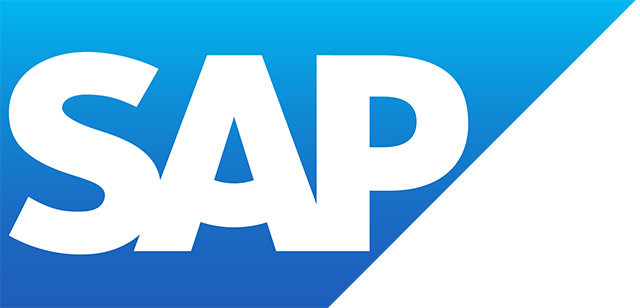SAP Applicant Tracking
Filter By
Browse By
- SAP Analytics and AI
- SAP Application Development and Integration
- All SAP Application Development and Integration
- SAP ABAP
- SAP ABAP Development Tools
- SAP ABAP Test Cockpit
- SAP API Management
- SAP BAPI
- SAP Basis
- SAP BRF
- SAP Business Application Studio
- SAP CMS
- SAP Design Studio
- SAP Development Tools
- SAP DevOps
- SAP EAI
- SAP EDI
- SAP Extension Suite
- SAP Fiori
- SAP Fiori Elements
- SAP Integration Suite
- SAP Low Code Application Development
- SAP Low Code Automation
- SAP Netweaver
- SAP Release Management
- SAP UI5
- SAP Web Application Server
- SAP Web IDE
- SAP Business Process Management
- SAP Center of Excellence
- SAP CIO
- SAP Customer Experience
- SAP Data and Data Management
- All SAP Data and Data Management
- SAP BW
- SAP BW/4HANA
- SAP Crystal Reports
- SAP Data Archiving
- SAP Data Center
- SAP Data Governance
- SAP Data Integration
- SAP Data Migration
- SAP Data Quality
- SAP Data Services
- SAP Data Strategy
- SAP Data Visualization
- SAP Data Warehouse Cloud
- SAP DMS
- SAP Document Control
- SAP EIM
- SAP ETL
- SAP ETL Tools
- SAP HANA
- SAP HANA Administration
- SAP HANA Deployment Infrastructure
- SAP HANA Studio
- SAP Master Data
- SAP Master Data Governance
- SAP MDM
- SAP Enterprise Architect
- SAP Enterprise Asset Management
- SAP ERP
- SAP Finance
- All SAP Finance
- SAP Accounting
- SAP AR AP
- SAP Asset Accounting
- SAP Billing Systems
- SAP BPC
- SAP BRIM
- SAP Cash Management
- SAP Central Finance
- SAP Controlling
- SAP COPA
- SAP Cost Center Accounting
- SAP Currency Risk
- SAP e-invoicing
- SAP FICO
- SAP Finance Automation
- SAP Advanced Financial Closing
- SAP Financial Consolidation
- SAP Financial Planning
- SAP FX Risk
- SAP General Ledger
- SAP Global Tax Management
- SAP Hyperion
- SAP Order to Cash
- SAP Payment Processing
- SAP Profitability Analysis
- SAP Rebate Management
- SAP S/4HANA Finance
- SAP SWIFT Compliance
- SAP Treasury Management
- SAP Universal Journal
- SAP Governance Risk and Compliance
- SAP Human Capital Management
- SAP Intelligent Technologies
- SAP Platform and Technology
- All SAP Platform and Technology
- SAP Business Technology Platform
- SAP Cloud
- SAP Cloud Connector
- SAP Cloud Integration Platform
- SAP Cloud Migration
- SAP Cloud Platform
- SAP Cloud Providers
- SAP Cloud Strategy
- SAP Digital Signature
- SAP Container Platform
- SAP HANA Enterprise Cloud
- SAP Digital Asset Management
- SAP Smart Forms
- SAP HEC
- SAP Digital Integration Hub
- SAP Hyperscalers
- SAP Infrastructure
- SAP Messaging
- SAP Quality and Testing
- SAP Security
- SAP Spend Management
- SAP Supply Chain Management
- All SAP Supply Chain Management
- SAP APO
- SAP Asset Management
- SAP Business Network
- SAP Digital Manufacturing Cloud
- SAP Digital Twin
- SAP EWM
- SAP IBP
- SAP Inventory Management
- SAP Label Printing
- SAP Logistics
- SAP Manufacturing
- SAP Manufacturing Automation
- SAP MES
- SAP MII
- SAP MM
- SAP MRO
- SAP MRP
- SAP Order Management
- SAP Plant Maintenance
- SAP PLM
- SAP Production Planning
- SAP S&OP
- SAP SD
- SAP SPM
- SAP Supply Chain Planning
- SAP Track and Trace
- SAP Transportation Management
- SAP System Administration
What is SAP Applicant Tracking?
The recruiting process generates a lot of information for recruiters to handle — from resumes to candidate data and more. Applicant tracking systems (ATS) are popular for corralling that information and linking it to important HR systems. SAP applicant tracking can be handled within the SAP SuccessFactors Recruiting module, but there are many ATS options and complementary tools out there.
What is SAP Applicant Tracking?
The recruiting process generates a lot of information for recruiters to handle — from resumes to candidate data and more. Applicant tracking systems (ATS) are popular for corralling that information and linking it to important HR systems. SAP applicant tracking can be handled within the SAP SuccessFactors Recruiting module, but there are many ATS options and complementary tools out there.
ATS often serve as systems of record for the job posting and application process and enable digital management of the documents and data generated along the way. Applicant tracking involves many recruiting functions depending on the product, such as:
- Job description posting
- Career pages and job boards
- Automated resume screening to find best candidate matches
- Resume storage
- Interview scheduling
- Application sorting
- Analytics
- Automated e-mails and offer letters
- Candidate sourcing
There are a wide variety of solutions in the market that offer ATS capabilities. Eightfold uses AI to match clients and automate talent acquisition processes. Phenom aims to create more applicant-friendly candidate relationship management to complement ATS. Docusign integrates with ATS to provide document management. System integrators like Deloitte and Accenture can help with best practices around implementing ATS.
Effective SAP applicant tracking with ATS should cut down on the time recruiting professionals spend reading resumes and sending emails and enable best practices around handling the personal data of applicants.
Key Considerations for SAPinsiders:
- ATS is a standard for large organizations. With the rise of cloud-based HR tools, even small to medium-size businesses are implementing ATS. With those systems in place and an applicant-friendly job market creating hiring challenges, companies are going even farther with deeper analytics and more candidate-focused experiences. If your company is still using traditional ATS, you may want to look at other measures to stay competitive for top talent.
- Automate aspects of the recruiting process with ATS and similar systems. For example, automating interview scheduling saves recruiters an average of multiple hours per day, according to Cliff Jurkiewicz, VP of Global Strategy at Phenom. This frees up recruiters to spend more time establishing relationships with candidates.
- Don’t underestimate the importance of first impressions in the overall employee experience. If you have a smoother applicant tracking and recruiting process, that will reflect well on your organization and be more appealing to candidates.
565 results
-

- SAP S/4HANA
 Premium
Premium
SAP S/4HANA Adoption: Subsequent Implementation of the Parallel Ledger
Reading time: 29 mins
Learn various SAP S/4HANA adoption options available for companies running the classic General Ledger. Follow steps to introduce the ledger subsequently in a live SAP S/4HANA system. Key Concept SAP introduced the parallel ledger concept with the SAP ERP Central Component (ECC) system in 2005, and since then, it is gaining popularity due to its...…
-

- SAP Payment Processing
 Premium
Premium
Uses of the Treasury Payment Program
Reading time: 25 mins
Learn about the different types of payments that can be made through SAP’s Treasury payment program. Key Concept Treasury departments execute various types of payments, such as bank account transfers, trade-related payments, and one-off payments. These types of payments can be made by a treasury department using SAP’s Treasury payment program (formally named the Payment...…
-

- SAP Accounting
 Premium
Premium
An Overview of Using the Credit Facility Functionality
Reading time: 21 mins
Learn the process flow, the integration points with other SAP modules, and the advantages of using SAP’s Transaction Manager for credit facilities. Key Concept Most companies have credit facilities with their primary bank. SAP’s Transaction Manager module can be used to support the life cycle of credit facilities. The credit facility functionality is included in...…
-
-

- SAP Inventory Management
 Premium
Premium
How to Accelerate Your Inventory Sorting Using Batch Search Strategy
Reading time: 29 mins
Discover how to set up and use a batch search strategy to accelerate inventory sorting with business scenarios. Learn certain precautions to take while implementing the use of batch search strategy functionality. Key Concept The SAP system has provided a system strategy to efficiently sort materials or product batches in inventory using batch search strategy...…
-

 Premium
Premium
7 Principles for Creating Organizational Commitment to EDW Data Quality
Reading time: 10 mins
SAPxperts/BIIncluding a data validation process as part of your SAP BW or SAP NetWeaver BI implementation helps you find problems in your data more quickly and lends credibility to your data. Learn how to optimize your data validation effort with seven important principles. Key Concept Validation is a process that checks incoming data in your...…
-

 Premium
Premium
Three Methods for Editing DataStore Object Data Without Altering Source Data
Reading time: 17 mins
DataStore object data usually updates when the user or system generates or changes source system documents. The data flows into SAP BW via a full load or delta queue extract. Unfortunately, the real world sometimes intrudes on this ideal scenario and requires you to edit data in BW directly. Discover the pros and cons of...…
-

 Premium
Premium
SAP BusinessObjects Planning and Consolidation: Gain a Better Understanding of Application Management
Reading time: 17 mins
When a user creates an application, much of what happens in SAP BusinessObjects Planning and Consolidation is hidden from the user. Take an in-depth look at how applications are created and see how InfoCubes and applications differ. This information can help you quickly troubleshoot any issues your users may encounter. Key Concept The term application...…
-
-

 Premium
Premium
SAP BusinessObjects Planning and Consolidation: Get to Know It Before Migrating
Reading time: 14 mins
Learn about the architecture of SAP BusinessObjects Planning and Consolidation. This helps you understand the migration options available for the different SAP BusinessObjects Planning and Consolidation releases. Key Concept Performance management is about the methodologies, processes, and systems that companies use to drive and monitor organizational performance. Organizations have to decide the right strategies to...…
-

 Premium
Premium
SAP BusinessObjects Planning and Consolidation: An Overview of How It Works with SAP NetWeaver BW
Reading time: 17 mins
Gain an understanding of what SAP BusinessObjects Planning and Consolidation is about and the heavy focus on making this a business-user-driven application. Learn about the two different products (the version for SAP NetWeaver and the version for the Microsoft platform) and the different releases of each one. In addition, find out about the various clients...…
-

 Premium
Premium
Create Unparalleled Analytical Applications with SAP NetWeaver BI, Visual Composer, and Macromedia Flex
Reading time: 14 mins
Discover how Visual Composer allows you to create analytical applications without programming knowledge. Key Concept Also known as actionable dashboards and often confused with scorecards, floorplans, or cockpits, analytical applications allow business users to perform strategic, business-related functions. Key features of this type of program include easy navigation, graphical displays, drill-down menus, targeted content and...…
Become a Member
Unlimited access to thousands of resources for SAP-specific expertise that can only be found here.
Become a Partner
Access exclusive SAP insights, expert marketing strategies, and high-value services including research reports, webinars, and buyers' guides, all designed to boost your campaign ROI by up to 50% within the SAP ecosystem.
Upcoming Events
-

SAPinsider ERP Transformation Summit
October 22 - 23, 2025
New Orleans, Louisiana
United States
View Event
Related Vendors
Your request has been successfully sent

